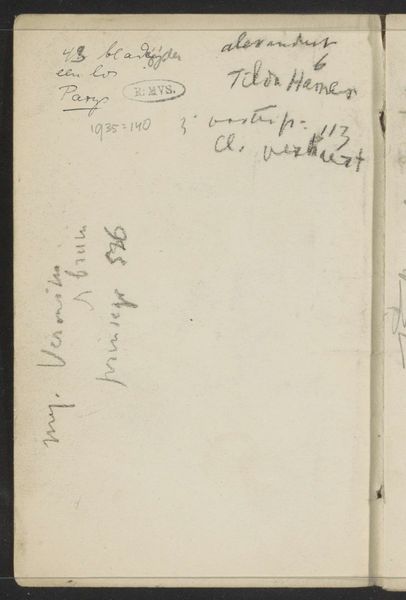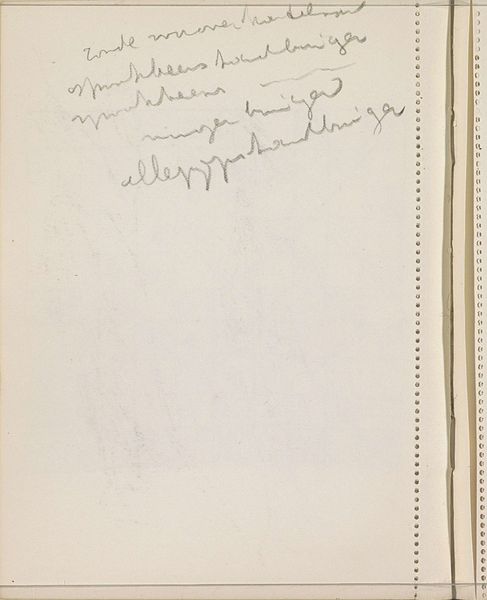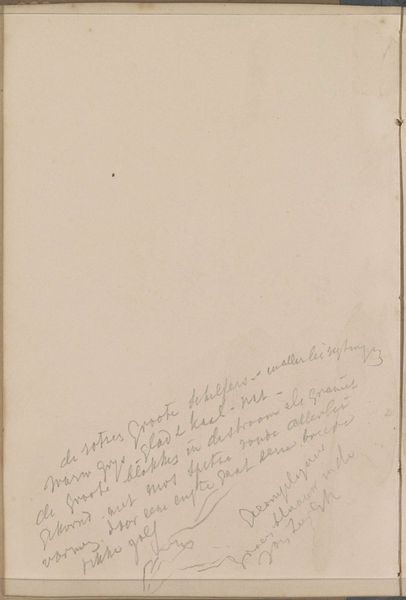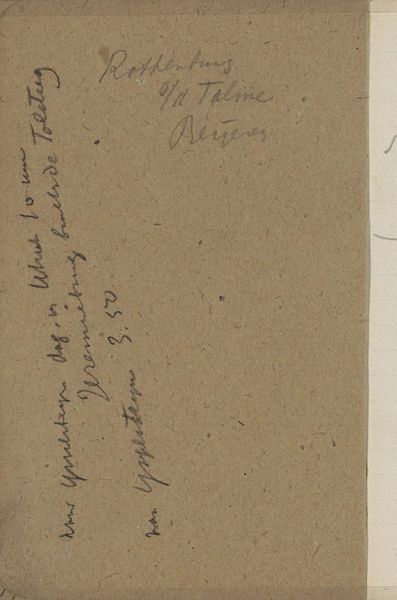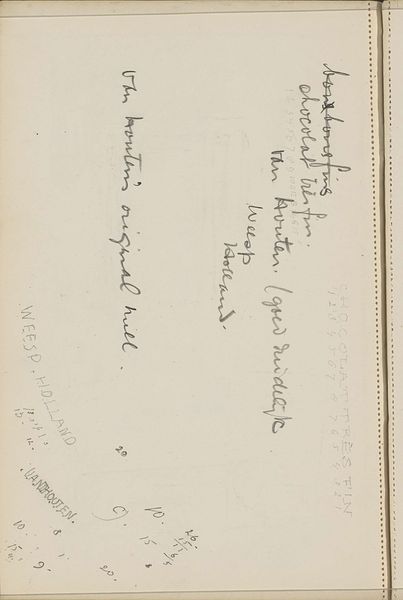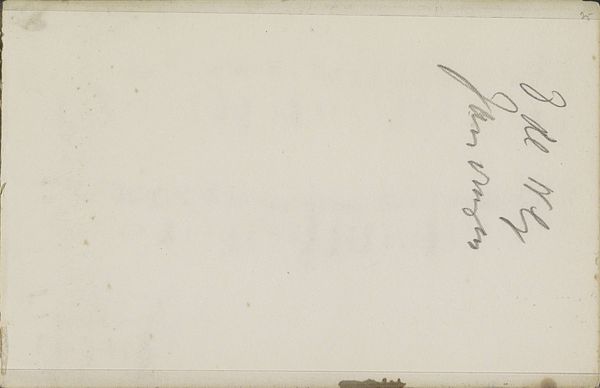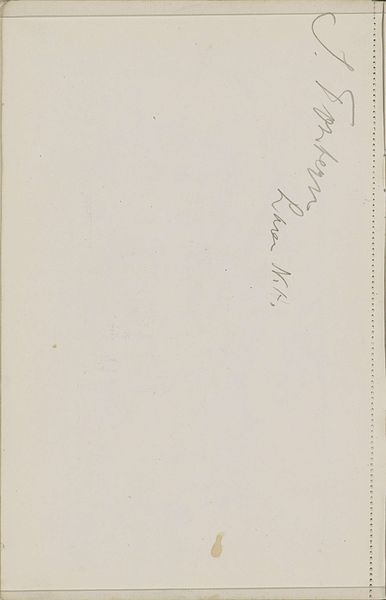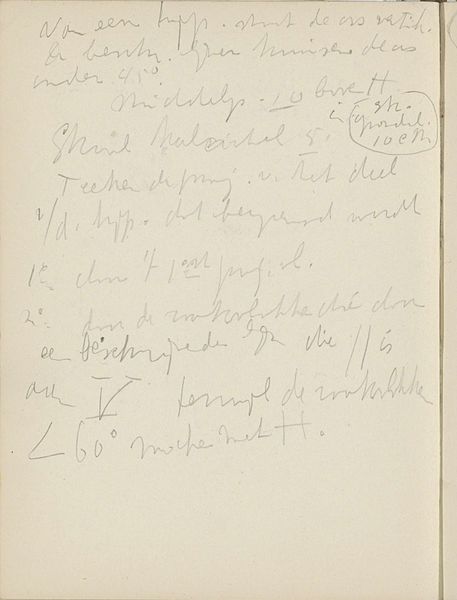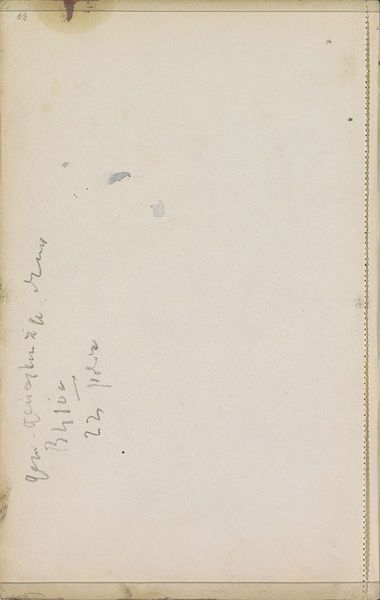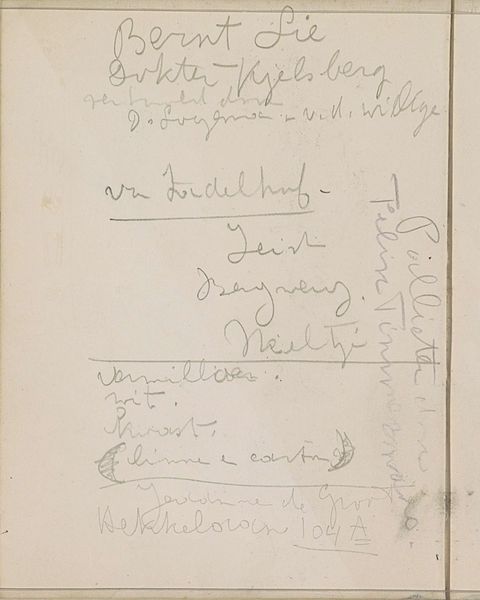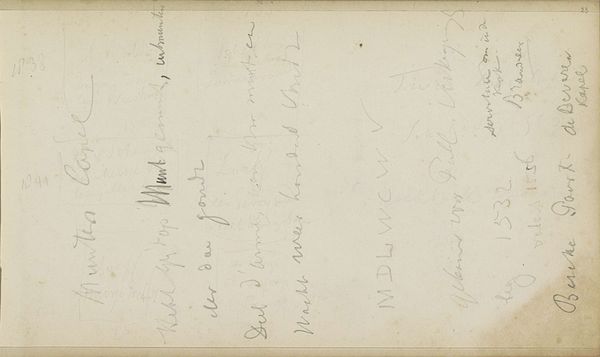
drawing, paper, pencil
#
drawing
#
amateur sketch
#
hand written
#
hand-lettering
#
incomplete sketchy
#
hand drawn type
#
hand lettering
#
paper
#
personal sketchbook
#
idea generation sketch
#
sketch
#
pencil
#
abstraction
#
small lettering
#
initial sketch
#
monochrome
Copyright: Rijks Museum: Open Domain
Curator: Here we have “Notitie,” a pencil drawing on paper created around 1916. It’s currently part of the Rijksmuseum collection. Editor: My first impression? It feels fragile, like catching a fleeting thought. The writing is so light, almost ephemeral. Curator: Indeed. "Notitie" translates to "note," and that's precisely what this appears to be: a quick jotting. I see traces of words, likely in Dutch. The phrase "klein beetje" might translate to "little bit," and it makes me consider what social or political influences the author would have felt to note it down so fleetingly. Editor: It’s interesting you go straight to social implications, because to me, it really highlights the process of making, the rough and ready beginnings of something. What sort of paper did they use? Was the pencil hard or soft? How did those practical elements influence the message they wanted to send? I wonder if the limited materials might have played a role, how access influenced the design decisions made, how even economics determined the visual impact and communication ability of art? Curator: Perhaps. But considering the era – around World War I – the scarcity you mention takes on a greater context, doesn't it? Resources would have been strained; choices limited. It prompts reflection about cultural and class background of this work too; consider the societal impact these conditions exerted on modes of expression, access, and whose voices get amplified through art. Editor: It definitely introduces important economic perspectives and restrictions; in particular, how a scarcity of means doesn't diminish creativity, instead highlighting how artists create ingenuity and express profound insights even when constrained by simple resources. We see the tangible evidence of this resourcefulness directly in pencil on paper. Curator: Precisely. And this also connects it to artistic movements prevalent at the time. Is there a trace of social commentary, political upheaval maybe embedded within the seeming simplicity and incomplete construction? Editor: It is thought-provoking, that’s true. It encourages us to consider more deeply about social movements influencing creativity as we try to reconstruct meaning via visual forms and tangible, process driven clues that emphasize resource availability at that point in time. Curator: Absolutely, engaging us to consider wider narratives that reflect power dynamics related to access as we understand them even today, especially how marginalised perspectives become more mainstream as economic influences and restrictions can highlight shared struggles regardless your race, age, ability or gender! Editor: So it turns out to be a testament to creativity that invites conversation on cultural, historical or economical contexts. It asks questions not just to art, but how resources shaped a collective society as well.
Comments
No comments
Be the first to comment and join the conversation on the ultimate creative platform.

